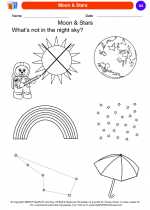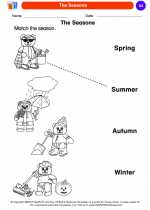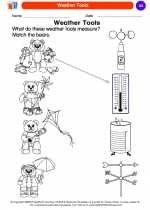Lipids
Lipids are a diverse group of organic compounds that are essential for the structure and function of living cells. They are hydrophobic molecules, which means they are not soluble in water. Lipids serve a variety of important roles in the body, including energy storage, insulation, and the formation of cell membranes. The main types of lipids include triglycerides, phospholipids, and steroids.
Types of Lipids
- Triglycerides: These are the most common type of lipids and are often referred to as fats. They consist of three fatty acid molecules bonded to a glycerol molecule. Triglycerides serve as a major source of energy for the body.
- Phospholipids: These are a major component of cell membranes. They have a hydrophilic (water-attracting) head and two hydrophobic (water-repelling) tails, which allows them to form a bilayer in the cell membrane.
- Steroids: Steroids are a type of lipid that includes hormones such as estrogen and testosterone, as well as cholesterol, which is important for cell membrane structure and function.
Functions of Lipids
Lipids have several important functions in the body:
- Energy storage: Triglycerides store energy in the form of fat, which can be used by the body when needed.
- Insulation: Lipids help to insulate and protect the body by forming a layer of fat beneath the skin.
- Cell membrane structure: Phospholipids are a key component of cell membranes, helping to maintain their structure and regulate what enters and exits the cell.
- Hormone production: Steroid hormones are derived from cholesterol and play a role in regulating various physiological processes in the body.
Study Guide
Here are some key points to remember when studying lipids:
- Identify the main types of lipids and their structures.
- Understand the functions of lipids in the body, including energy storage, insulation, and cell membrane structure.
- Learn about the role of lipid-derived hormones, such as estrogen and testosterone.
- Explore the impact of lipid metabolism on overall health, including the importance of maintaining a balance of different types of fats in the diet.
Remember to review the structure and function of lipids regularly to reinforce your understanding of this important topic in biology!
[Lipids] Related Worksheets and Study Guides:
.◂Science Worksheets and Study Guides Kindergarten. Weather
Coloring Worksheet Calendar
Calendar  Coloring Worksheet
Coloring Worksheet Calendar
Calendar  Coloring Worksheet
Coloring Worksheet Day and Night
Day and Night  Coloring Worksheet
Coloring Worksheet Day and Night
Day and Night  Coloring Worksheet
Coloring Worksheet Exploring Weather
Exploring Weather  Coloring Worksheet
Coloring Worksheet Exploring Weather
Exploring Weather  Coloring Worksheet
Coloring Worksheet Look at the Clouds
Look at the Clouds  Coloring Worksheet
Coloring Worksheet Look at the Clouds
Look at the Clouds  Coloring Worksheet
Coloring Worksheet Moon & Stars
Moon & Stars  Coloring Worksheet
Coloring Worksheet Moon & Stars
Moon & Stars  Coloring Worksheet
Coloring Worksheet Natural Events
Natural Events  Coloring Worksheet
Coloring Worksheet Natural Events
Natural Events  Coloring Worksheet
Coloring Worksheet Sun and Shadows
Sun and Shadows  Coloring Worksheet
Coloring Worksheet Sun and Shadows
Sun and Shadows  Coloring Worksheet
Coloring Worksheet The Seasons
The Seasons  Coloring Worksheet
Coloring Worksheet The Seasons
The Seasons  Coloring Worksheet
Coloring Worksheet Things in the Sky
Things in the Sky  Coloring Worksheet
Coloring Worksheet Things in the Sky
Things in the Sky  Coloring Worksheet
Coloring Worksheet Weather Tools
Weather Tools  Coloring Worksheet
Coloring Worksheet Weather Tools
Weather Tools 

 Coloring Worksheet
Coloring Worksheet
 Coloring Worksheet
Coloring Worksheet
 Coloring Worksheet
Coloring Worksheet
 Coloring Worksheet
Coloring Worksheet
 Coloring Worksheet
Coloring Worksheet
 Coloring Worksheet
Coloring Worksheet
 Coloring Worksheet
Coloring Worksheet
 Coloring Worksheet
Coloring Worksheet
 Coloring Worksheet
Coloring Worksheet
 Coloring Worksheet
Coloring Worksheet
 Coloring Worksheet
Coloring Worksheet
 Coloring Worksheet
Coloring Worksheet
 Coloring Worksheet
Coloring Worksheet
 Coloring Worksheet
Coloring Worksheet
 Coloring Worksheet
Coloring Worksheet
 Coloring Worksheet
Coloring Worksheet
 Coloring Worksheet
Coloring Worksheet
 Coloring Worksheet
Coloring Worksheet
 Coloring Worksheet
Coloring Worksheet

The resources above cover the following skills:
EARTH AND SPACE SCIENCE (NGSS)
Earth’s Systems
Students who demonstrate understanding can:
Use and share observations of local weather conditions to describe patterns over time.